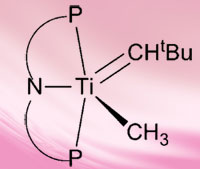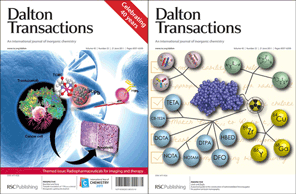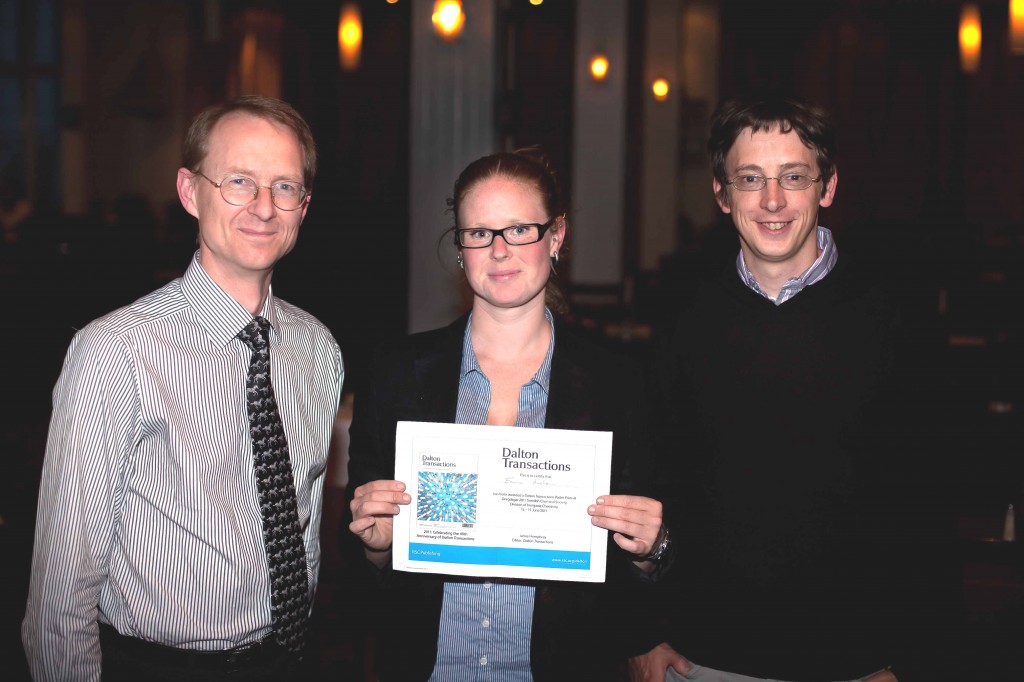
Ms Aneheim flanked by conference organisers Prof Lars Öhrström, Chalmers Tekniska Högskola (left) and Dr Christopher Knee, University of Gothenburg. Photo credit: Magnus T. Johnson
The inorganic chemistry division of the Swedish Chemical Society held their ‘Oorgdagar 2011’ last week. This meeting brings together researchers in inorganic chemistry, from organometallic chemistry to materials chemistry, in Sweden and Scandinavia. To find out more visit the inorganic chemistry division’s webpage, or see Jamie’s earlier blog.
Dalton Transactions was pleased to sponsor a poster prize at the meeting, which was awarded to Emma Aneheim, a phd student at Chalmers University of Technology in Göteborg, Sweden. Ms Aneheim’s poster was on ‘Palladium chemistry in the advanced reprocessing of spent nuclear fuel’. Find out more about her research by visiting Emma’s webpage at the Department of Nuclear Chemistry.
Conference organiser Prof Lars Öhrström was very enthusiastic about how well the meeting went, commenting ‘it was a great success with speakers from the UK, Germany, Finland, South Africa, France, USA as well as Sweden. The next (second) meeting will be held in Lund 2013’











 A N^N Pt(II) bis(acetylide) complex containing coumarin was prepared in this Dalton Transactions Hot article.
A N^N Pt(II) bis(acetylide) complex containing coumarin was prepared in this Dalton Transactions Hot article.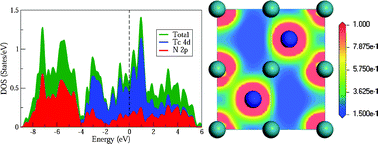 The most stable crystal structures of different TCN compounds are investigated in this Dalton Transactions Hot article.
The most stable crystal structures of different TCN compounds are investigated in this Dalton Transactions Hot article. Our Editorial Board member, Professor Ian Manners from Bristol University has been made a fellow of the Royal Society. The Royal Society is the oldest scientific academy in the world, and being elected as a fellow is a great honour.
Our Editorial Board member, Professor Ian Manners from Bristol University has been made a fellow of the Royal Society. The Royal Society is the oldest scientific academy in the world, and being elected as a fellow is a great honour.
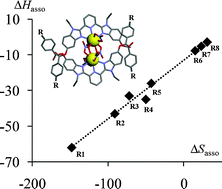 This Perspective article by Claude Piguet has been selected as a Dalton Transactions Hot article, where the current understanding of the role of energy in self assembly is explained.
This Perspective article by Claude Piguet has been selected as a Dalton Transactions Hot article, where the current understanding of the role of energy in self assembly is explained.